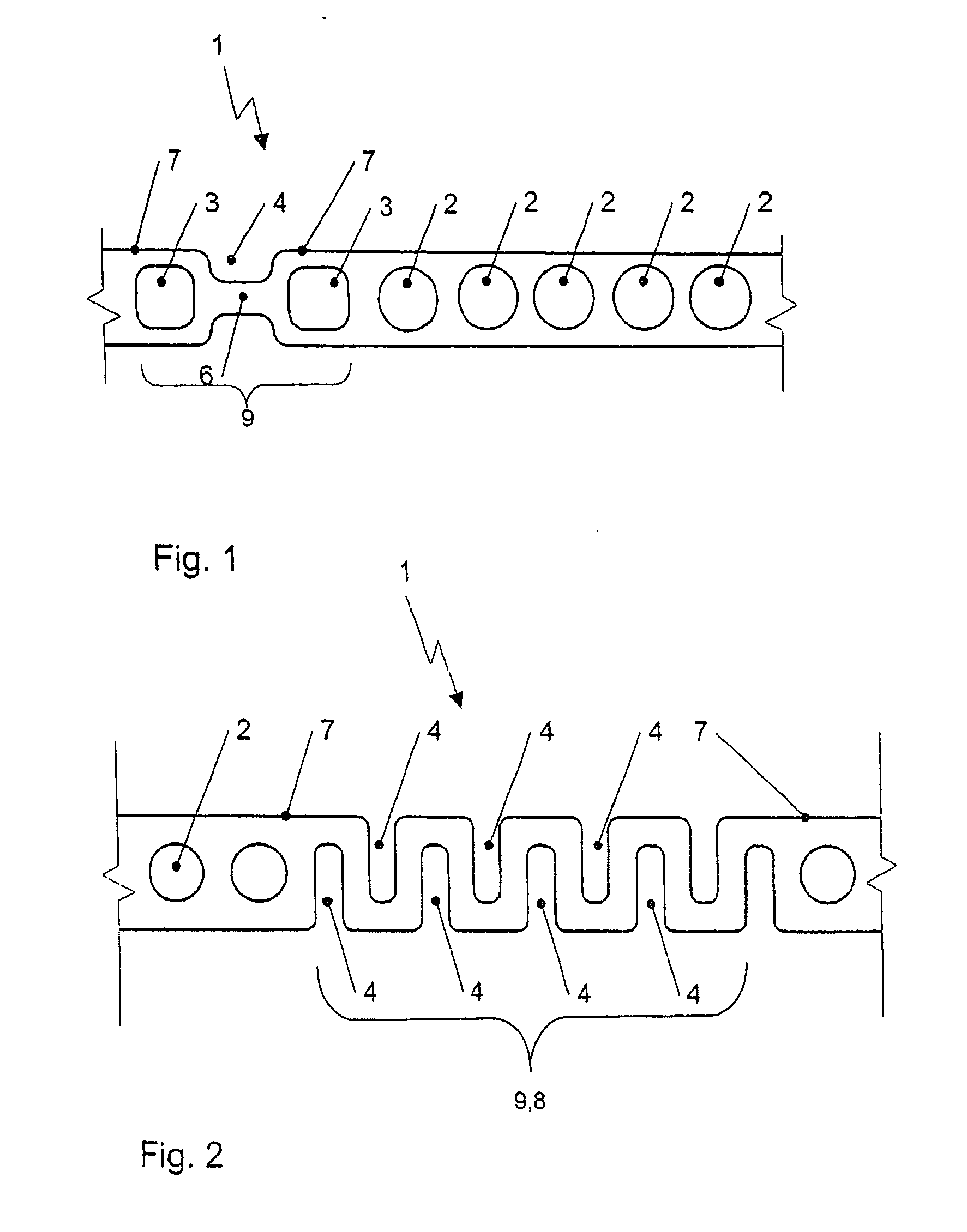Multichannel flat tube for heat exchanger
a heat exchanger and multi-channel technology, applied in the direction of discharge tube main electrodes, incadescent cooling arrangements, lighting and heating apparatus, etc., can solve the problems of high heat conduction loss between the flow channels, unsatisfactory proportion of heat transport, and inevitable heat conduction along the width of the flat tube, so as to reduce the material cross-section, heat conduction, and enhanced heat transmission efficiency
- Summary
- Abstract
- Description
- Claims
- Application Information
AI Technical Summary
Benefits of technology
Problems solved by technology
Method used
Image
Examples
Embodiment Construction
[0036] In FIG. 1, a cross-sectional view of a multi-channel flat tube 1 with a region of reduced heat transmission with connecting web and two isolating channels is shown. The multi-channel flat tube 1 is shown only in parts of its cross-section to identify the peculiarities of the region of reduced heat transmission 9. The region of reduced heat transmission 9 separates the channel sections 7 from each other. To ensure particularly efficient separation, constrictions 4 are provided in the multi-channel flat tube 1 that lead to formation of the connecting web 6. This measure is completed by use of two isolating channels 3 that are located on both sides of the connecting web 6, together with the constrictions 4 forming the region of reduced heat transmission 9.
[0037] In FIG. 2, as an alternative design, the region of reduced heat transmission 9 is configured as a meander-shaped connecting web 8. Here for separating the channel sections 7 with the respective channels 2, the multi-cha...
PUM
 Login to View More
Login to View More Abstract
Description
Claims
Application Information
 Login to View More
Login to View More - R&D
- Intellectual Property
- Life Sciences
- Materials
- Tech Scout
- Unparalleled Data Quality
- Higher Quality Content
- 60% Fewer Hallucinations
Browse by: Latest US Patents, China's latest patents, Technical Efficacy Thesaurus, Application Domain, Technology Topic, Popular Technical Reports.
© 2025 PatSnap. All rights reserved.Legal|Privacy policy|Modern Slavery Act Transparency Statement|Sitemap|About US| Contact US: help@patsnap.com



